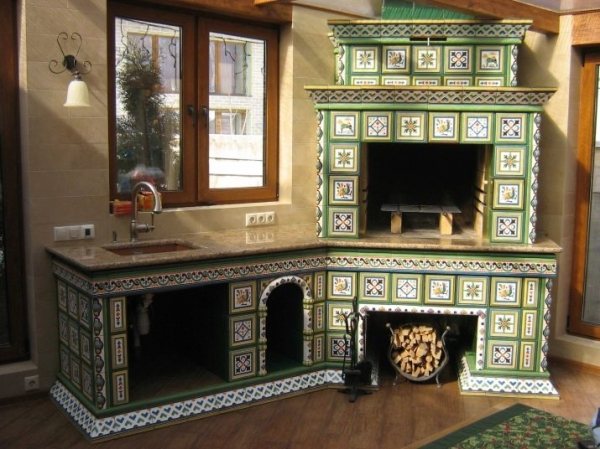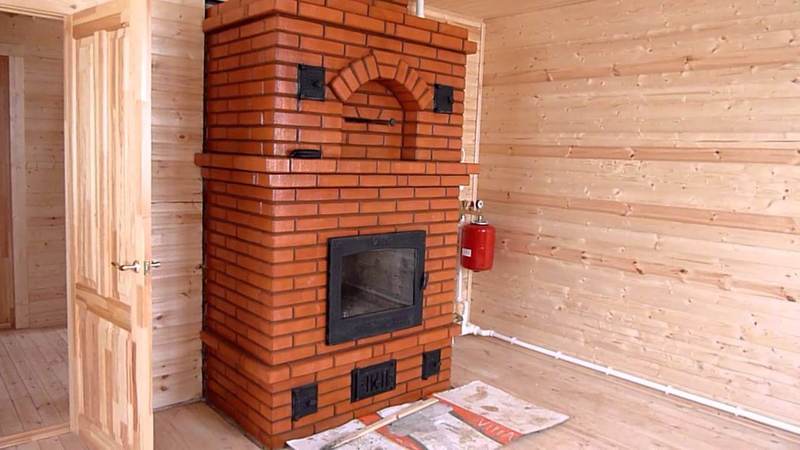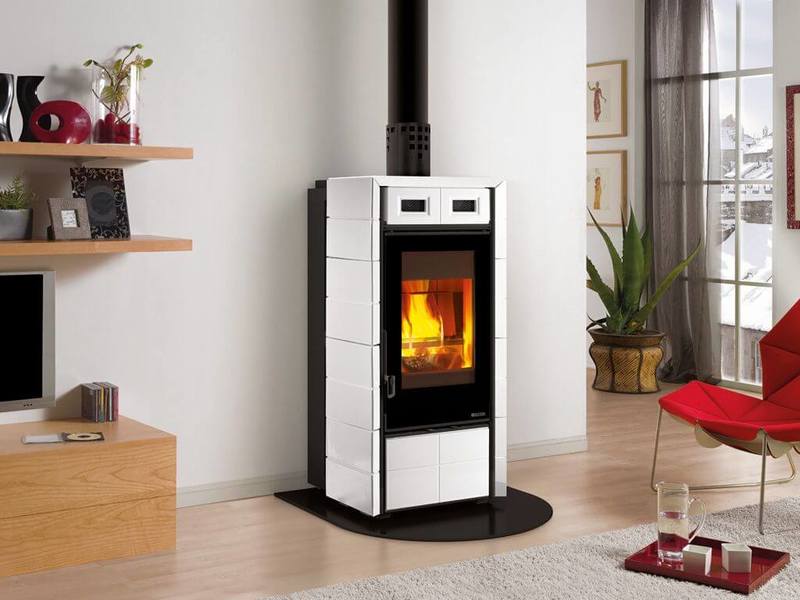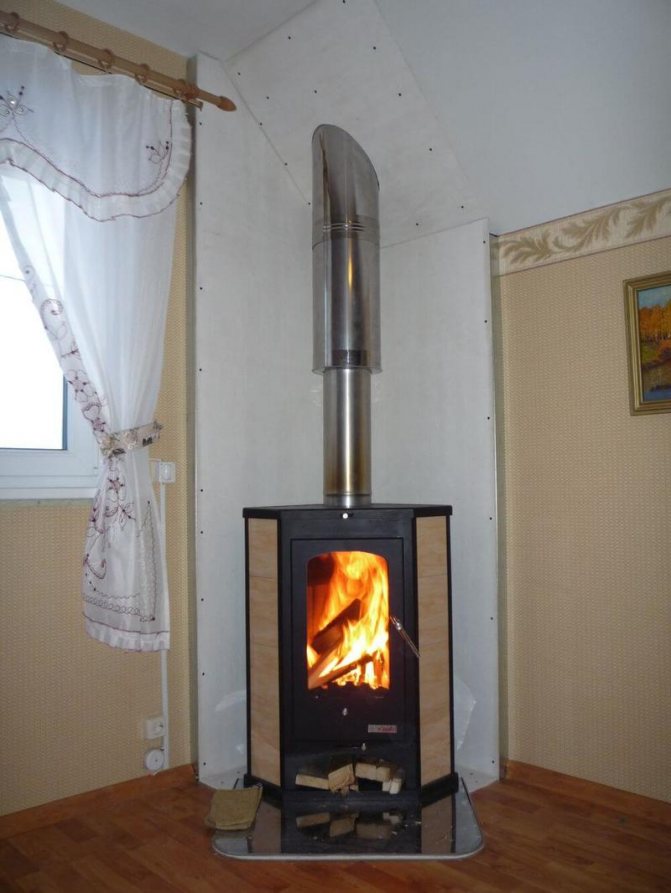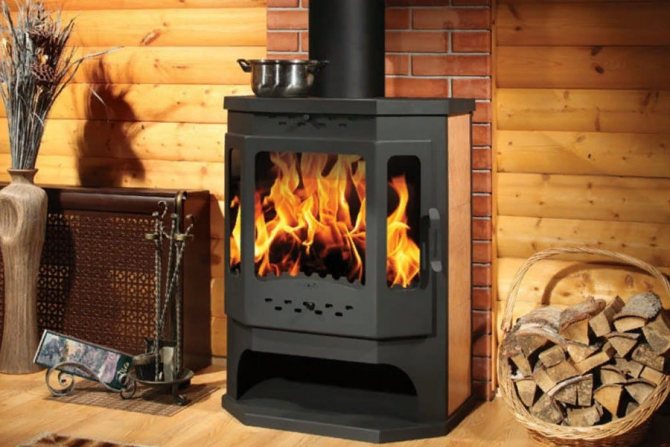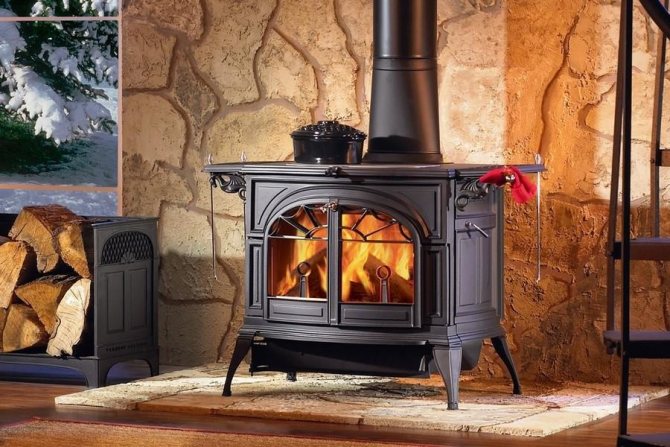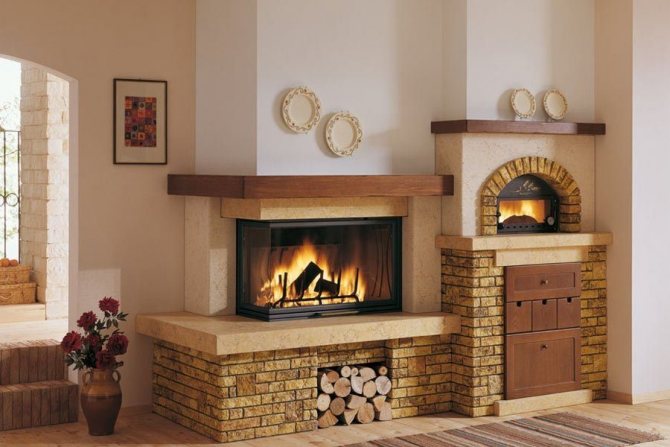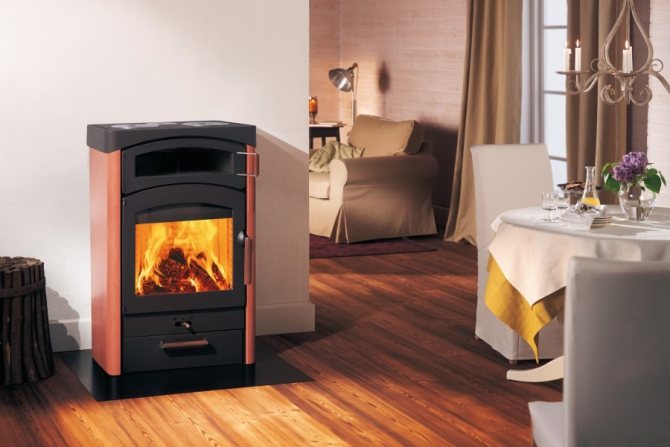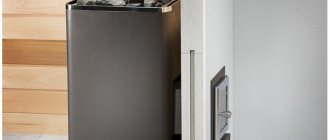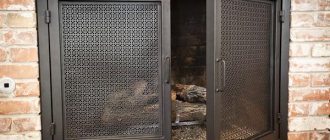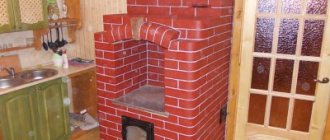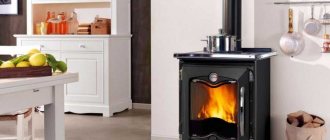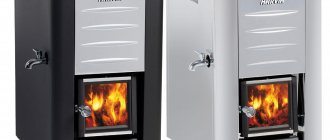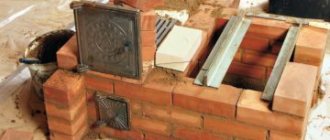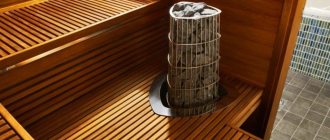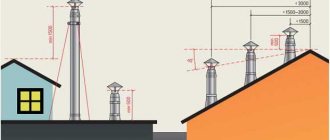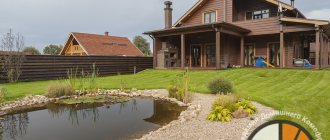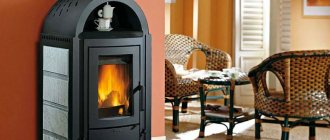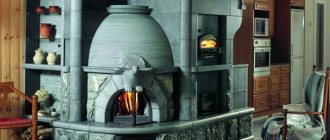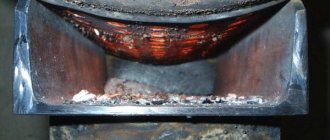Features and Benefits
Home fireplaces appeared in Russia in the 13th century, and replaced the stove in some houses. The fireplace was not only a heating structure, but also a luxurious decor. An open fire and crackling firewood create a homely atmosphere and a warm atmosphere. A fireplace, as a way of heating and decor, will easily fit into many interior styles: classic, modern, high-tech. With the help of a fireplace, you can zone the room and create a cozy corner for a family vacation.
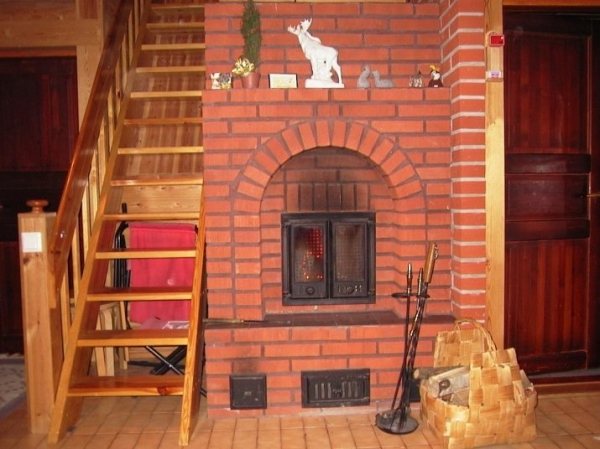
Maintainability
Steel furnaces without lining are repaired only by welding. By the way, they also cook cast-iron stoves. But many cast iron stoves are assembled with sealant and bolted together. Therefore, by disassembling the oven and replacing the part, we can reassemble it. In a steel furnace lined with chamotte, repairs usually consist only in replacing bricks with new ones. Therefore, from the point of view of maintainability, I would choose steel furnaces with a furnace lining.
Which is better: brick or cast iron?
Cast iron... The design of a modern fireplace usually consists of a thick-walled firebox, a body and a chimney. Some models can be piped using a heat exchanger. This eliminates the need to connect central heating and purchase water heaters. The service life with constant use will be more than 15 years. It is worth choosing high-quality models with firmly installed parts and made of thick cast iron.


A durable cast iron fireplace will last a long time. The material can withstand the highest temperatures and is less susceptible to fading.
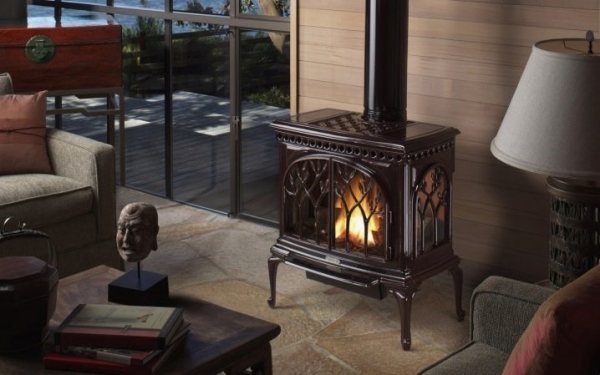

When exposed to high temperatures, the furnace structure does not deform.
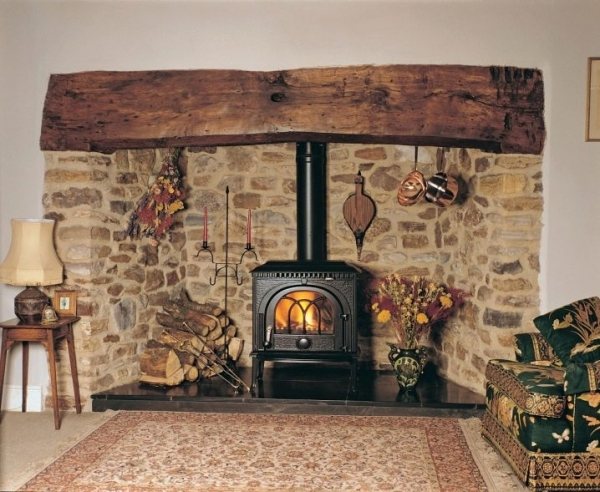

Cast iron has a high heat transfer. After the wood in the fireplace burns out, cast iron will store and distribute heat for a long time, which allows heating large rooms and saves costs.
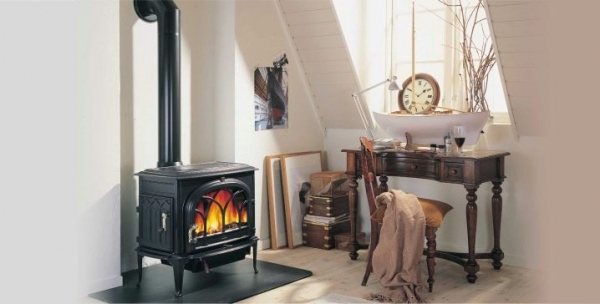

Many companies offer to buy a ready-made cast iron fireplace. Assembly and installation will not be difficult, but if you plan to install a heat exchanger, it is better to enlist the support of a specialist.
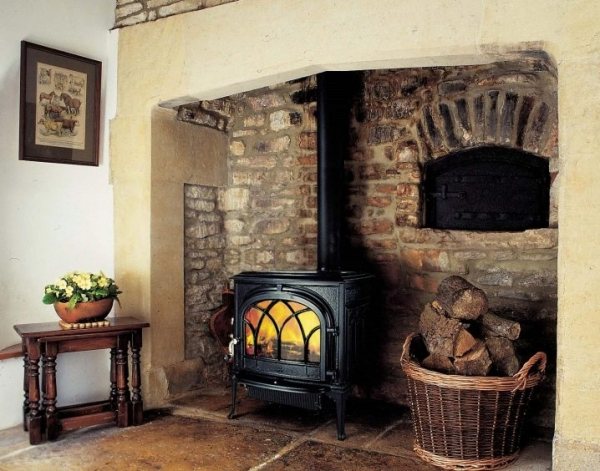

The cast iron stove option will not be as expensive as stone or brick models. The average model will cost 20-25 thousand rubles.
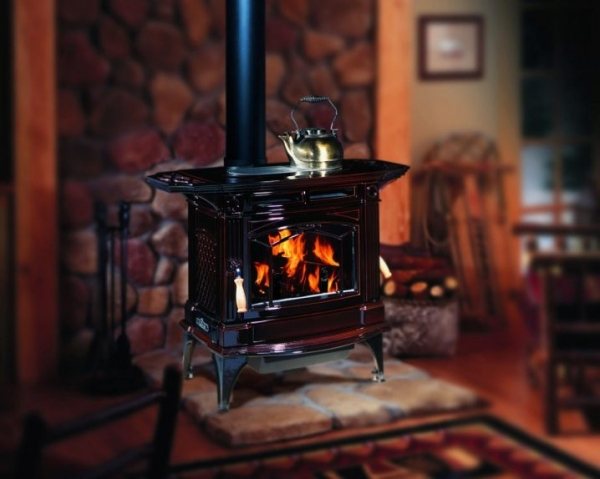

Do not sharply cool the cast iron stove, cold water, ice or snow can damage the material. Also, you do not need to hit the red-hot fireplace, from this it can burst.
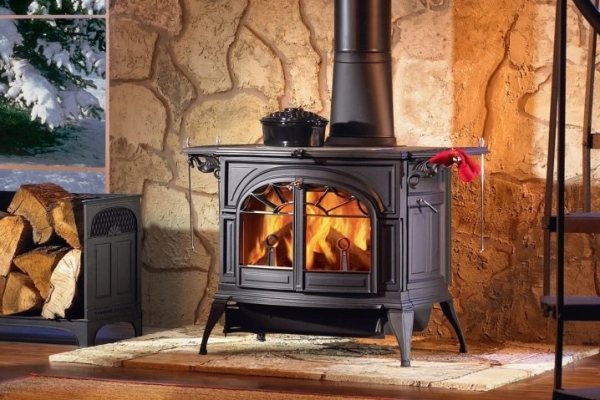

Regular and thorough care is required. All heavily contaminated parts of the fireplace: ash pan, chimney, must not be left unattended and must be cleaned regularly.
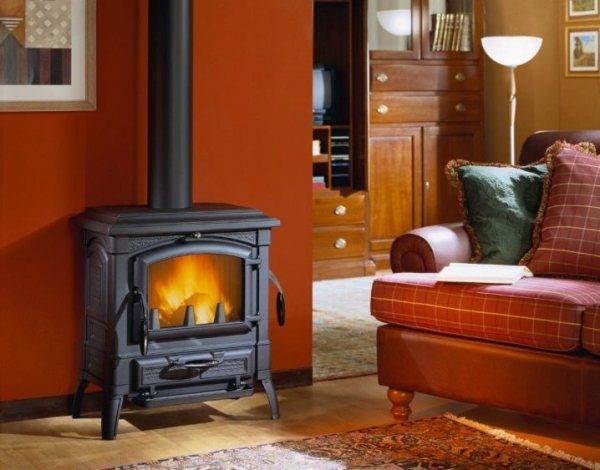

To many, this version of the fireplace seems unpresentable due to the black color and simplicity of the material. But the cast iron stove can be ordered with any finish, the special paint does not undergo changes even due to the high temperature.
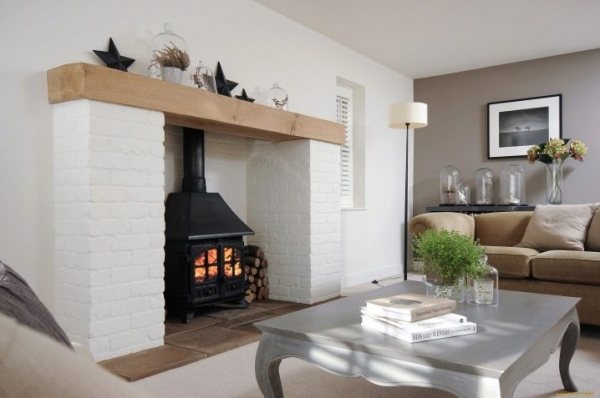

A brick oven is most often installed in country houses. The material allows you to build a structure with your own hands. With regular use, a brick fireplace will start to deteriorate after 5 years. Brick stoves allow you to quickly heat up the room even in the cold season.
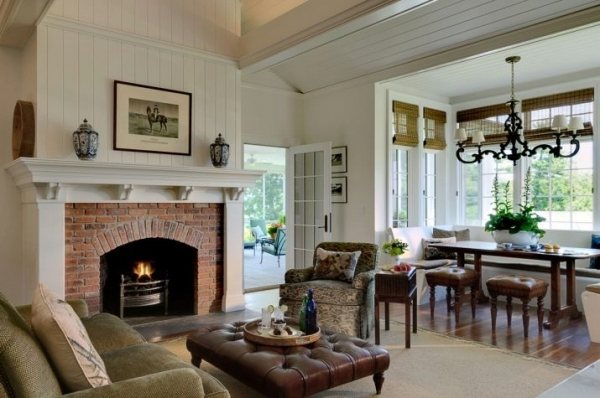

The design is strong enough, resistant to sudden changes in temperature and humidity, which makes it less fragile.
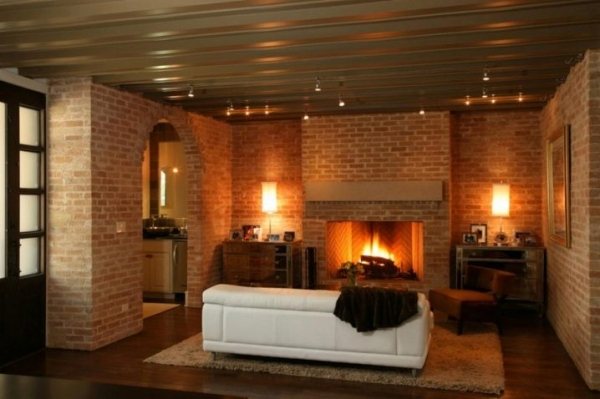

A real brick fireplace is quite easy to use, unlike cast iron, it does not need frequent cleaning.
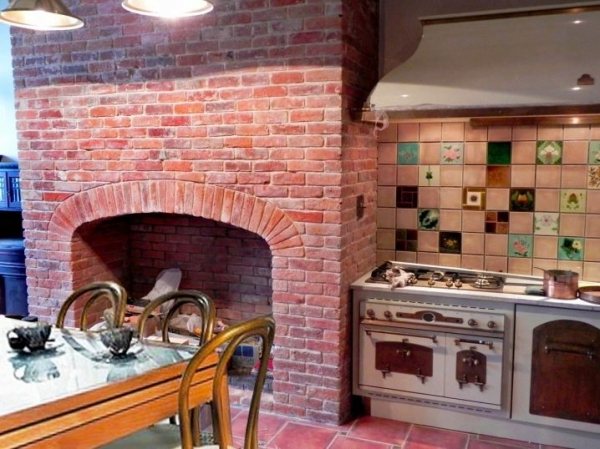

High-quality brick does not emit harmful substances and unpleasant odors when heated.
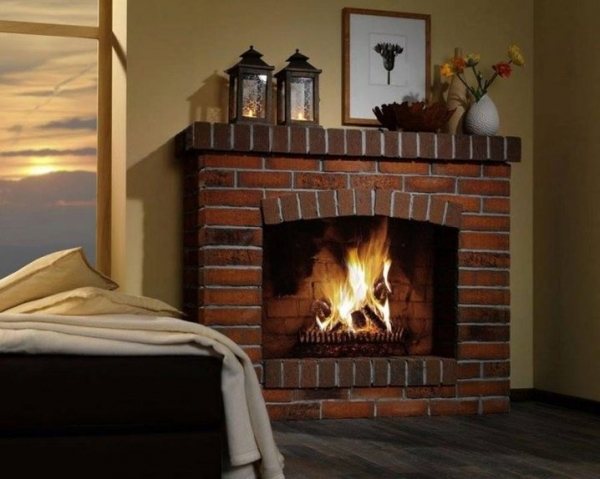

To lay out a brick fireplace yourself, you must have the appropriate experience and special tools, otherwise you need the help of a specialist stove-maker.Even minor installation errors can affect the good performance of the fireplace.


Quality brick is an expensive material. Also, costs are needed for the work of a stove-maker, floor reinforcement and decoration.
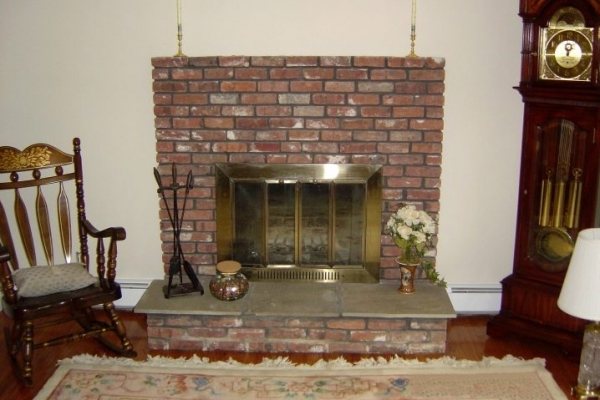

Brick kilns are heavy enough and require a solid foundation to install.
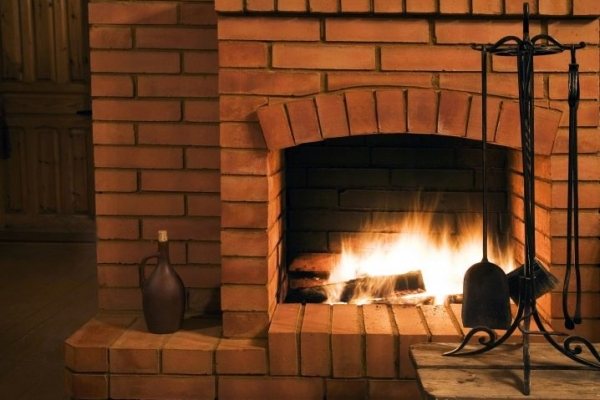

Installation on lower floors. It is difficult to install a brick fireplace in modern apartments. The partition between the floors may not support the weight, and the installation of the hood will have to be coordinated with a special authority.
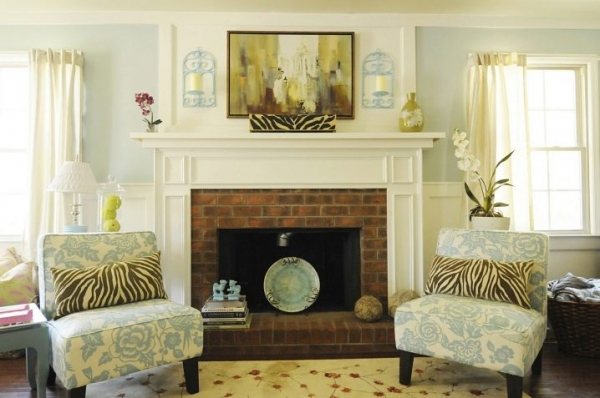

Advantages and disadvantages of a metal hearth
Metal fireplace
A cast iron fireplace is made almost entirely of cast iron. The material has a high heat transfer, due to which the stove quickly and evenly distributes heat in the house. The structure consists of a chimney, a body and a firebox with thick walls, which is closed by a transparent door with heat-resistant glass. Improved models are complemented by heat exchangers for the operation of hot water heating.
The cast iron stove is connected to a conventional chimney. Technically complex models require more painstaking work: connecting to a pipeline, creating a brick cushion, and pulling out a pipe. Simple fireplaces are better in terms of connectivity, but improved options open up more options, including getting hot water at any time of the year without connecting to a common water supply system and buying expensive heaters.
It is possible to determine which of the fireplaces is better, taking into account the characteristic positive and negative aspects of operating the stoves. Among the advantages of a cast-iron hearth, the following qualities stand out:
- durability of the unit - cast iron walls withstand extremely high temperatures and burn out more slowly than furnaces made of other materials;
- the design does not change its shape when exposed to high temperatures;
- ease of installation, the possibility of buying a ready-made structure;
- ease of operation and maintenance;
- high heat transfer of metal makes it possible to heat large rooms and maintain a comfortable temperature for a long time after the stove is turned off;
- low cost of a fireplace.
Many people believe that metal looks unpresentable in a modern interior. Dark cast iron does not harmonize well with a light interior, where plastic, wood, glass, tiles predominate. But this opinion is erroneous and refers to structures made by hand using, for example, a cast-iron bath.
A compact cast iron fireplace that matches any design, complementing the ambience. And if black material stops you, buy a stove with a white finish. Manufacturers cover fireplaces with special paint that does not crack or crumble under the influence of high temperatures. There are fewer disadvantages of cast iron stoves:
- hot cast iron is quite brittle. If you get on a hot material with cold water, or drop a heavy object, the stove may burst;
- it is impossible to leave the work of the hearth without attention. Regular maintenance is required: cleaning the ash pan and chimney;
- heavy weight requires several people to be installed.
Varieties of material
The modern market offers a wide selection of bricks: fireclay, clinker, etc. Basic requirements for bricks for laying fireplaces and stoves:
Resistant to temperature changes. Unsuitable bricks can crack or deform when suddenly cooled or heated, which leads to rapid wear of the fireplace.
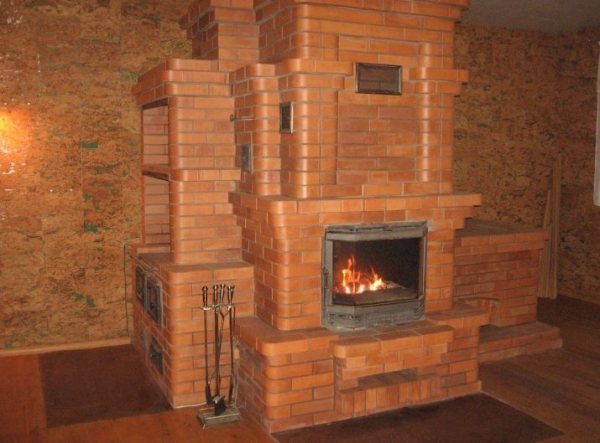

Accumulation and retention of heat for a long time. In the cold season, it is important enough that the room heats up quickly, and the brick retains heat for a long time, even after the firewood stops burning.
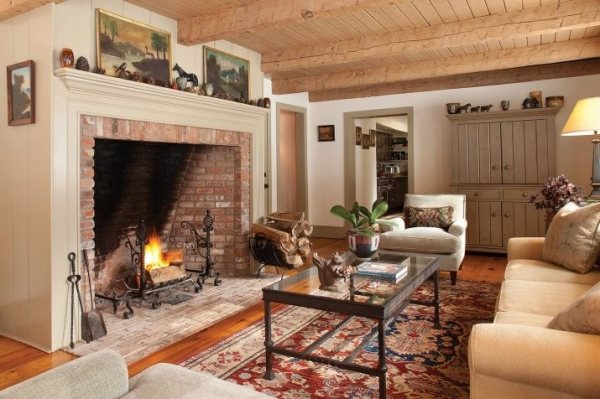

What is the fundamental difference between a fireplace and a stove
A stove is a heating device capable of accumulating, that is, retaining heat.After burning the fuel, the stove uses the accumulated heat to heat a house or summer cottage. In order to increase the efficiency, smoke channels are mounted inside the stove, through which the hot gas moves through the heated room.
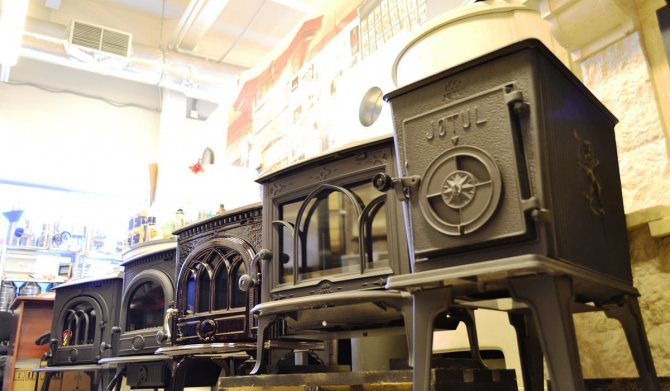

Cast iron stoves
The stove differs from the fireplace in three ways:
- The oven is always a closed structure. In most cases, they have cast iron doors; The ash pan in such a heating device is always kept ajar for normal air circulation;
- To maintain the combustion process, a grate is installed between the ash pan and the device itself.
- The fireplace is more ventilation than heating equipment. Fireplaces are not designed to heat large rooms, they do an excellent job of heating people sitting nearby. Instead of a door in the fireplace, there is a portal - a place where fuel burns and from where heat is generated. Fireplaces are very demanding on draft and chimney design. An incorrectly installed chimney leads to attenuation and stoppage of heating of the house or summer cottage.
If we compare a fireplace and a stove in terms of efficiency, then the heating system with a portal loses in all respects, since most of the heat goes into the atmosphere through the chimney. But fireplaces do an excellent job of evoking positive emotions and creating coziness in the apartment.
Mechanical strength
Resistance to open fire. It is definitely worth checking the quality certificate, which indicates the main characteristics and properties of the material. For fireplaces and stoves, GOST 390-96 must be specified.
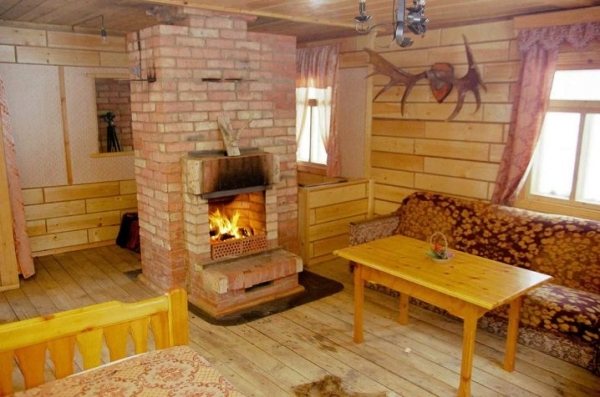

Fireclay bricks are made from special clay "fireclay" and some additives. Aluminum oxide gives the brick special strength and protection against environmental influences.
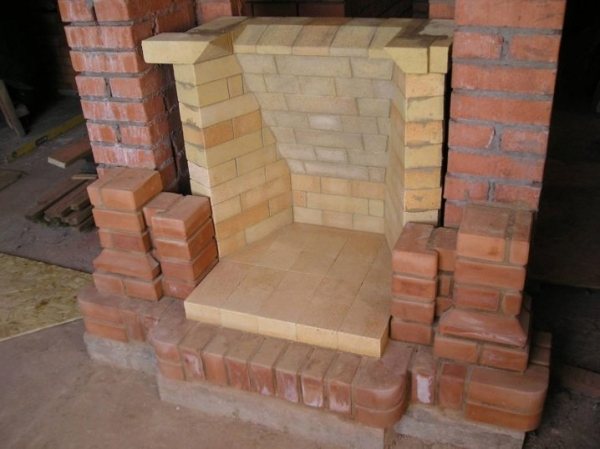

Clinker brick - has high strength and low moisture absorption. It can be used both for construction and for cladding. The color palette ranges from yellow to dark brown.
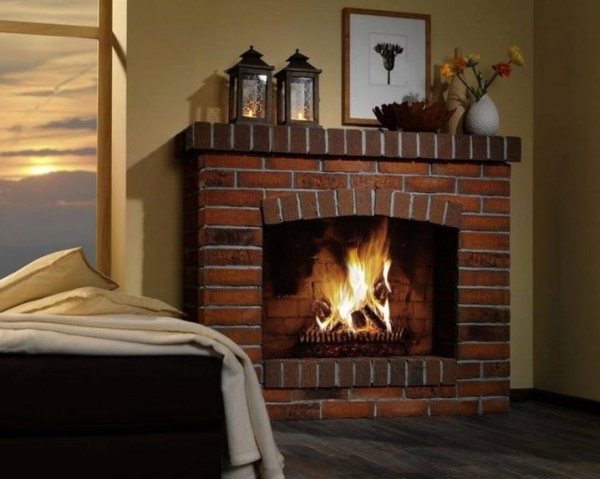

A special type of clay, "skinny", is mixed with various mineral additives, which gives the brick special strength and temperature resistance. Clinker bricks wear out less, and versions with a glazed surface do not absorb moisture at all (ordinary brick absorbs up to 25% moisture), which is especially important for outdoor fireplaces.
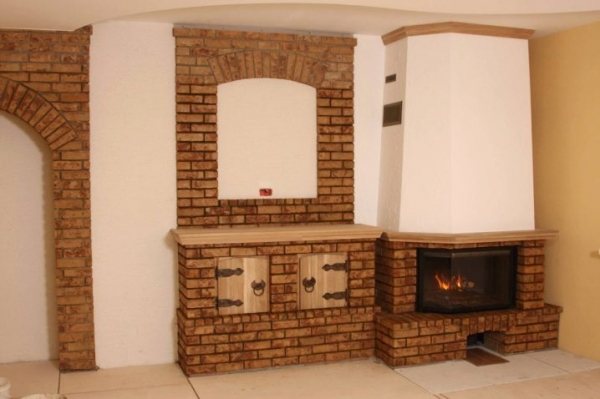

Periclase brick is expensive; rather rare minerals are used in its manufacture. But, at the same time, periclase bricks are highly refractory and are often used for the construction of fireplaces.
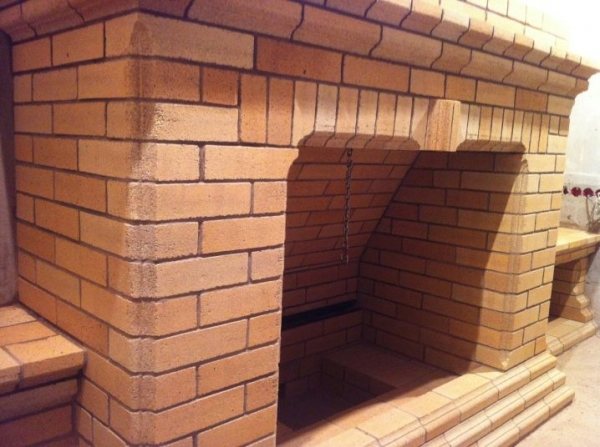

Figured bricks are used to decorate the fireplace. You can choose a different shape, texture and color. Do not forget that the facing material for the fireplace must have the same characteristics of strength and fire resistance. Sometimes, when facing, carved elements of ceramic bricks are used in the form of a triangle, arch, trapezoid and even a circle.
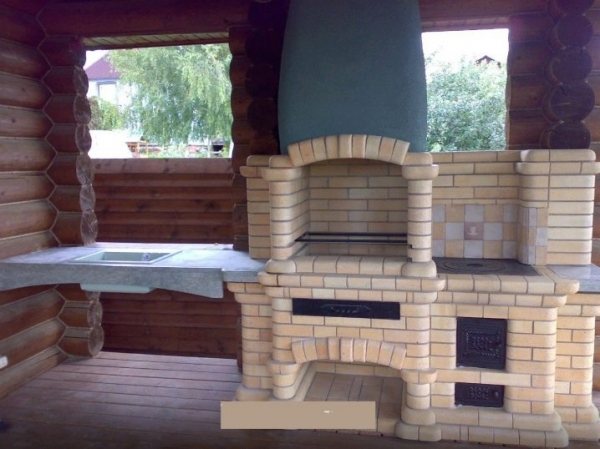

When choosing high-quality oven bricks, you should pay attention to the manufacturer's brand. One of the best firms producing facing and oven bricks is Lode. The Latvian company in the production uses high quality and environmentally friendly materials, follows modern technologies and trends. Thanks to a wide color palette, you can choose a brick for any interior: make a modern fireplace from light brick or an old one from a material with an artificial antiquity effect.
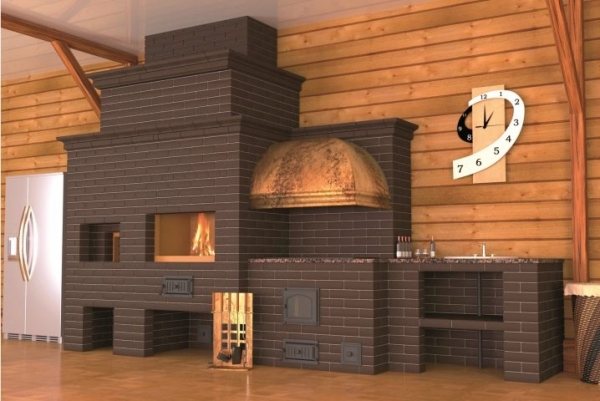

The antique effect of the fireplace can be given by using hand-molded bricks in the masonry. There is no need to worry about the quality of such a brick, it has the same high strength properties. But, such material is quite high in terms of cost. The advantage of hand-molded bricks is not only in appearance, but also in environmental friendliness; in its manufacture, pure clay is used without impurities.
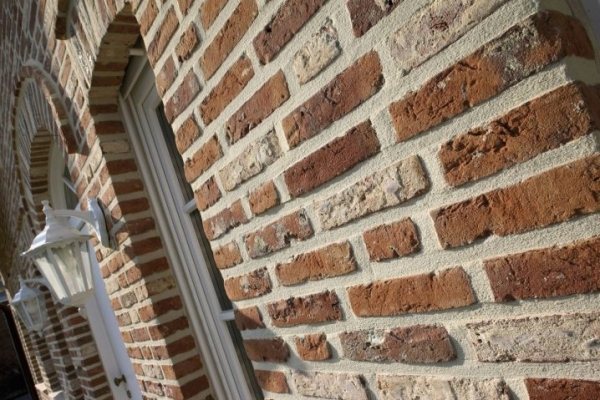

To obtain a unique texture and color, apply:
- Firing with the addition of special carbon powder.
- Secondary firing is carried out.
- Press through the mold with water.
- They are treated with colored sand.
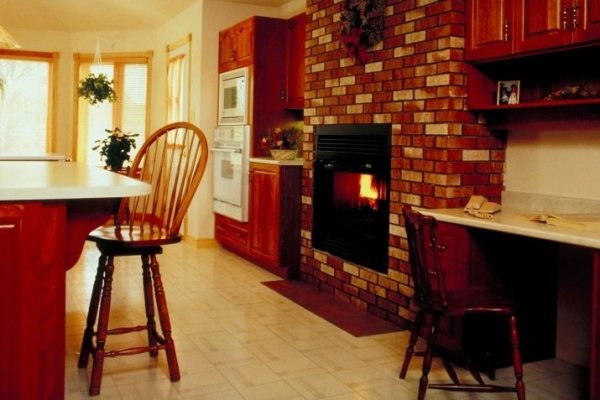

Warm home: how to choose a fireplace stove
So, you have made the decision to buy a fireplace stove. Now it remains to decide which fireplace stove is best suited for your summer cottage or country house. Still, the cost of such a device is quite high, and it will be a shame to just throw this money down the drain. Therefore, when buying a fireplace stove, you should decide on a number of parameters.
Fireplace stove power
The larger the area of the room to be heated, the more powerful it should be fireplace stove... Each model has its own power rating. In order to choose the best variant of the fireplace stove for this indicator, simple calculations should be made: we take 1 kW of power per 10 m2 of the area of the heated room (the average ceiling height is 2.5 meters).
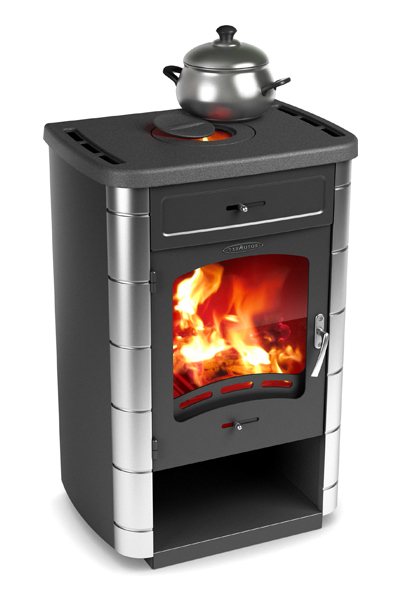

It is not recommended to purchase either an overly powerful fireplace stove or a device with insufficient power in your case. In the latter case, the device will have to be switched to maximum power mode and operated for a long time until the air in the room is completely warmed up. As a result, overheating of the fireplace stove can occur, which will entail a number of unpleasant consequences (after all, in this mode the stove can fully work no more than 3 hours).
That is why before buy fireplace stove, you should read the instructions for its operation and pay attention to the average (nominal) power of this device. This is exactly the working power of the fireplace stove, at which the stove can function for a long time with the addition of firewood.
The minimum power of the fireplace stove is also indicated in the technical documentation. This is the power at which the device is able to heat the room for the maximum time on one standard portion of firewood.
It should be noted that fireplace stoves are designed to warm the air in 2-3 adjacent rooms. However, even the most powerful of them provide efficient heating of only one room (installation site).
Cast iron or steel fireplace stove?
It turns out that there is a rather big difference between these types of furnaces. Cast iron fireplace stoves, unlike their steel counterparts, have a higher thermal conductivity. Such ovens heat up a little longer, but they are able to heat the room for quite a long time. It is not without reason that cast iron has long been successfully used for the manufacture of various heating products.
If your goal is to quickly warm up the room, you should buy a sheet steel fireplace stove. They heat up almost instantly, but cool down much faster than cast iron furnaces.
When buying a fireplace stove made of cast iron or steel, you should pay attention to the mass and density of the material. These characteristics must fully correspond to the power of the device. A powerful cast-iron fireplace stove should never be too light. Steel sheets must have an internal protective lining of dense vermiculite or chamotte.
Cladding material
Modern manufacturers offer a huge selection of models of fireplace stoves with various cladding options. Note that stoves lined with ceramics or stone (for example, soapstone) take a little longer to warm up, but continue to radiate heat even after the fire in the fireplace has gone out. It is believed that such thermal infrared radiation has a positive effect on a person's well-being and even helps to reduce various joint pains.
Maintainability of the fireplace stove
It is advisable that the model you choose has the ability to replace cast iron plates or fireclay bricks in the firebox.
Equipment
High-quality fireplace stoves should have grate grates and fire dividers made of cast iron or fireclay bricks. The handles of the device and adjustment knobs must be reliably thermally insulated. A door with fire-resistant glass should fit snugly to the boundaries of the furnace firebox opening (as an option, a door with a system of springs and latches). All moving parts of the device must move freely, otherwise they can jam due to the inevitable expansion of the metal when the fireplace heats up. Pay attention to the correctness of the geometric shapes of the device: curvatures and deformations are unacceptable.
The presence of a system of long burning and glass cleaning
Due to it, modern models of fireplace stoves can work up to 6-8 hours on one fuel tab. The glass is cleaned with a stream of heated air.
Fireplace stove design
Today, manufacturers offer many models of fireplace stoves in a variety of designs - from elegant classics to stylish modern options. You just have to choose a fireplace stove that will best fit into the interior of your home.
Choosing fuel for a fireplace stove
When buying, you should definitely ask what type of fuel is best suited for this particular model (firewood of a certain moisture content, briquettes from peat or coal).
Availability of relevant documentation
All models of fireplace stoves must have state certificates: fire certificate, hygienic certificate, certificate of conformity from the manufacturer.
Warranty obligations
As a rule, European fireplace stoves have a guarantee for the body of up to 5 years. Glasses and linings may not be covered by this warranty.
The consultants of our online store sincerely hope that these tips will help you when choosing such a difficult device as a fireplace stove.
Types of models
You can choose a brick fireplace by location, by the amount of space and functional preferences. Modern manufacturers provide a large selection of fireplace designs with various features: small outdoor, for a house or even an apartment.
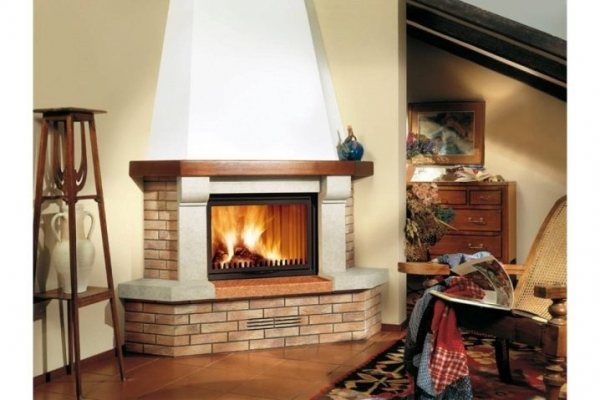

By location, there are classic options for fireplaces: corner model, built-in, island.
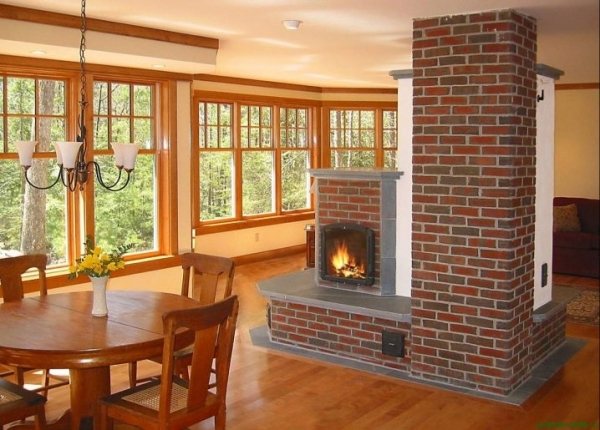

The corner model is suitable for relatively small rooms and does not take up much space. Such a summer cottage mini fireplace is quite simple to manufacture, has good traction and a stable structure. Corner models quickly heat up and heat the room.
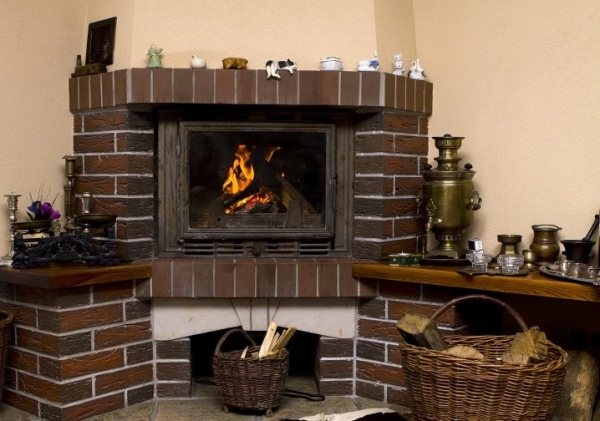

If you need to install a fireplace in an apartment, you should choose an external wall for the bookmark, but not next to the window, this will reduce the heating of the brick. It is necessary to coordinate the project with the construction and fire inspection, find out what kind of floors in the room, you may have to install an electric smoke exhauster in addition to the chimney.


In order not to risk and avoid unnecessary red tape, you can install a small false fireplace or an electric wall-mounted one. You can make a false brick-like fireplace with your own hands, and the fire will be replaced by wax candles of different shapes and heights.
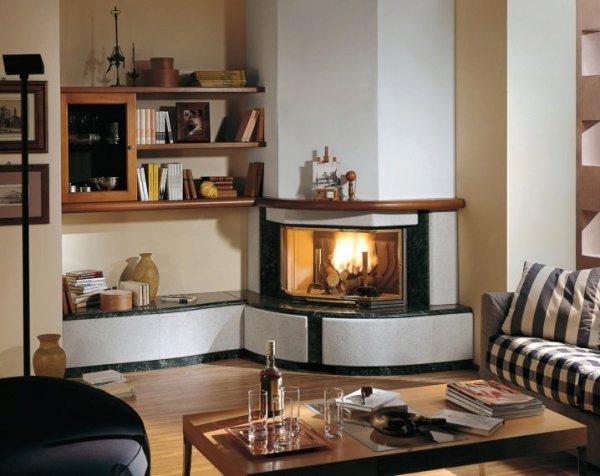

An island fireplace is perfect for zoning a room, unlike a wall fireplace, it can be placed anywhere. This model is suitable for large rooms, because takes up a lot of space. The suspended chimney is not wall-mounted and must be of a sufficiently strong, stable structure. The disadvantage of the island-type model is in low heat transfer, but this can be corrected by using high-quality bricks and additional decorative elements, they are also designed to retain heat.
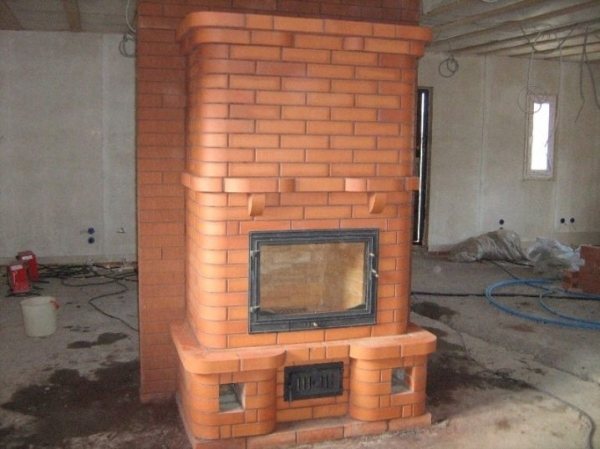

The built-in version is the most compact. The chimney is laid inside the wall, and the portal protrudes from it by only half a brick. This option must be decorated with decorative material, it will keep warm and decorate the interior.Often, built-in models are complemented by an upper shelf; frames with photographs, graceful figurines or candles of different sizes and heights will perfectly fit on it.
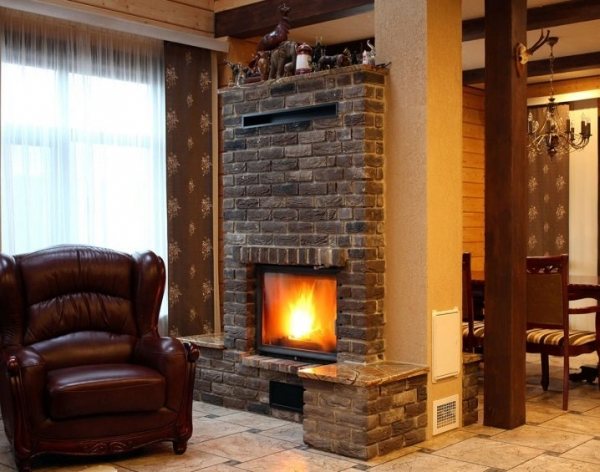

Comparison of cast iron stoves with brick and steel
The brick fireplace is suitable for suburban real estate and can be used at any time of the year. His
Brick fireplace
the design allows you to quickly warm up the room, especially with an open firebox. At the same time, the oven cools down quickly, almost immediately after the fire is extinguished.
Brick fireplaces open up many possibilities for the owner. Skillful hands will be able to make a compartment for cooking or barbecuing. It is not difficult to build a stove with your own hands and not necessarily within the confines of living quarters. Often brick fireplaces decorate a plot of a summer cottage or suburban real estate.
You can choose which is the best hearth for your home - made by yourself or by professionals. Both options open up room for imagination, allowing you to build the structure of your dreams. If you have any difficulties in this matter, contact the designer. He will help you choose an ordering scheme taking into account the general situation in the room.
Brick fireplace
The advantages of a brick fireplace include the following qualities:
- high heat capacity, which allows heating rooms without additional equipment;
- fast heating even in winter in an unheated house;
- strength and durability, resistance to temperature and humidity changes;
- ease of use.
Aesthetic properties are achieved thanks to a well-chosen order for laying the fireplace. A brick fireplace can be decorated with stone, tiles and plaster. But this is not necessary - if the work is done carefully, the seams are smooth, then the finished structure does not disappoint with its appearance.
There are also disadvantages to the fireplace:
- high cost of material and the work of stove-makers;
- laborious process of laying a fireplace;
- high weight of the structure, requiring floor reinforcement or the creation of an additional foundation.
Brick hearths are suitable for private houses and summer cottages. It is unprofitable and dangerous to install them in apartments - the partition between the floors may not support the weight of the fireplace.
Depending on the size and power, the cast-iron structure is capable of heating rooms up to 100-150 sq. In order for the quality of heating to remain high, and the house does not cool down in cold weather, you need to take care of the competent design of the system, correctly calculate the power of the model and choose a place for installation.
Aesthetic multifunctional cast iron stove
A cast iron stove heats up quickly and begins to give off heat. The heating rate is lower than the steel model can provide, but the difference is insignificant. But in comparison with brick, cast iron warms up much faster. This is important in the off-season, when the heating system does not work constantly, but only during periods of cold snaps.
Cast iron cools more slowly than steel, but much faster than brick. Metal does not accumulate heat well, therefore, for full-fledged heating operation, it is advisable to revet it with brick, natural or artificial stone. In this case, the structure will last longer, since it will evenly warm up and not cool down so quickly.
Metal ovens are mobile. If necessary, they can be easily dismantled and installed in another place. Cast iron is heavier than steel, so some difficulties may arise with its transportation. If the model is oversized, you will need to use assistants. Brick ovens are on a foundation. In theory, they can be disassembled and reassembled, but in practice this is fraught with many difficulties.
Dimensions of cast iron models
Temperature changes are not beneficial to any material, but cast iron can withstand them better than others. In steel stoves, seams often burst, and bricks crumble. If the house does not live permanently, then it is better to install a cast-iron structure, because brick can fail ahead of time.This is due to a decrease in the binding properties of the masonry mortar.
It is believed that cast iron lasts longer than steel. But this is not always the case. The service life of any metal stove depends on many factors: thickness, material quality, strength of seams and joints, frequency and operating conditions. Most often, cast iron actually turns out to be more durable, since it is resistant to corrosion, does not require painting the body, etc. However, there are also very "tenacious" steel models.
In terms of aesthetics, cast iron retains its original appearance longer than other materials. If the brick requires plastering or other facing, and steel becomes unsightly due to rust after a few years, then this is less characteristic of cast iron. Outwardly, it may not change for many years. Another plus is that the doors are rarely loosened in the stoves, as is the case with almost all brick structures.
Variety of cast iron models
Open or closed?
Classic open fireplace option. There are models in which the fire is visible from one side, two, three or four. Corner and built-in design offers one-way opening, and island - two, three or four. An open fire will create a cozy atmosphere in the interior, but the more open sides, the less heating the room. Due to the lack of brick walls, the heat goes into the chimney, without lingering in the room, the brick fireplace acquires a more decorative function.
An open firebox is more functional, it is more often installed on the street. On an open fire, you can cook a barbecue, which eliminates the need to buy a barbecue. A classic English fireplace is always open, this gives the interior more comfort. Models made of old brick look especially impressive.
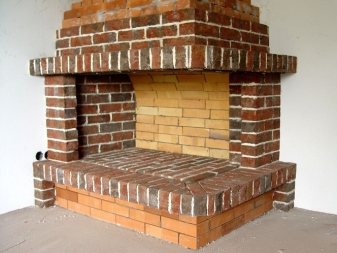

A closed firebox is safer than an open one; combustion takes place behind heat-resistant glass. The heat generated during combustion stays in the room longer. The advantage is the ability to accurately control combustion up to several degrees, the air is supplied using special mechanical levers, and not through an open space. A closed firebox, even with panoramic glazing, can be the main source of heat in the house and at the same time allows you to admire the fire. A glazed fireplace can be combined with a stove.
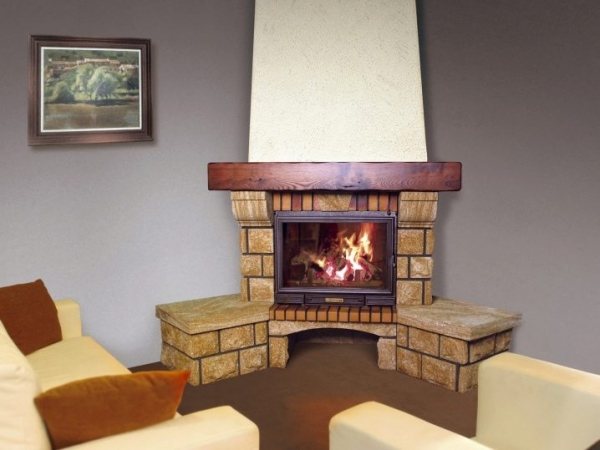

What's in the country - a stove or a fireplace?
The choice is not difficult - it is quite simple to figure out what is needed in the country - a stove or a fireplace, so that the country house is cozy and with a twist. Spending a fun weekend cooking culinary delights on the fire, living for a while at the country house in winter - everything can be easily arranged with the help of a stove or fireplace in the country. But what exactly to choose ... Let's figure out at first subtly what we still want from the country heating ...
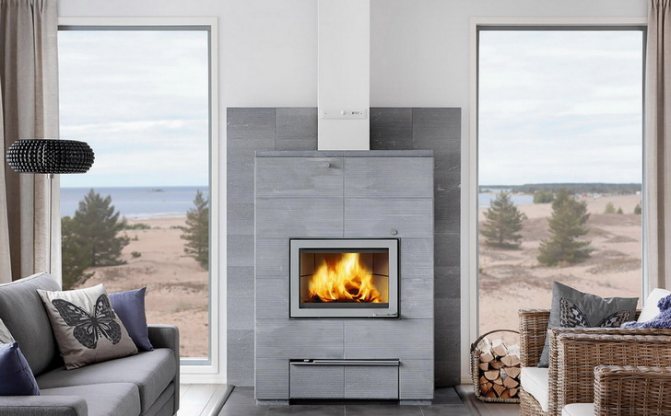

A stone fireplace stove for a summer residence can be relatively heavy ...
What can be achieved with a stove and fireplace in the country
If we can understand what delights we expect to receive from heating, then it will be quite easy to answer the question, whether to put a stove or fireplace in the country house.
- Cook delicious meat on the fire and more? - yeah….
- Admiring an open flame? - it is always yes. You can endlessly look at fire and water (fascinating spectacles). This is the main decoration of the summer cottage weekend.
- Warm up the house quickly? - for a dacha visited on a weekend it is always yes.
- Is it the most economical to heat, long-term burning? - yes with two hands, if you live at least a few days in winter.
- Make it cheaper ?, more beautiful ?, faster? - as if yes ...
Requirements are becoming somewhat conflicting in terms of hardware. It seems that you need both a stove and a fireplace at once ...
But behind the choice of a stove or fireplace, the main disadvantage of such heating is forgotten - the cold near the walls. Previously, in the hut, life proceeded near the stove, away from the cold corners. It is now believed that an individual will not be comfortable in such a house.
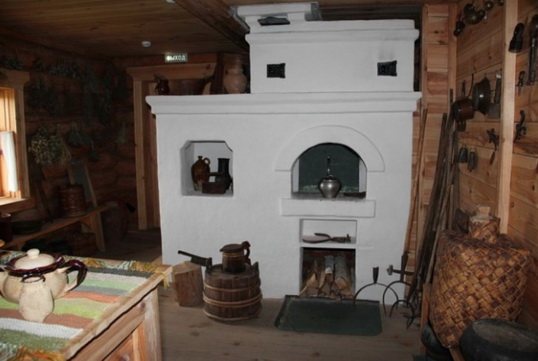

Ways to overcome cold corners, windows and walls in the country
Classic modern heating involves the installation of heating devices along the outer walls, under the windows - the main sources of cold, to create thermal curtains.
For the stove or fireplace, you will need helpers - heaters under the windows. The condition is optional, but desirable for a living space.
- A fireplace or stove in the center of the house and an electric convector under the windows is optimal for small houses.
- Additional system with solid fuel (any) boiler and radiators. Recommended option for houses with an area of 70 square meters, if they are going to live in cold weather.
- Very small rooms can be insulated with reflective foil along the bottom of the outer walls - this is an economical option for redistributing the heat emitted from the central stove in a small house.
The oven is far from accessible to everyone
The mass of a Russian brick oven is from 5 tons, more often 10 tons, - a separate foundation is needed. Installing a stove in some kind of house, without its major alteration will not work. The stove is installed in such a way that all rooms of a small building are warmed up from it. It does not bind tightly to the partitions, since it is on a separate foundation that can move regardless of the movement of the house.
Yes, and creating a massive brick oven is far from easy, the master still needs to be looked for. Therefore, a real brick or stone (talcomagnesite) stove is not often found in country houses.
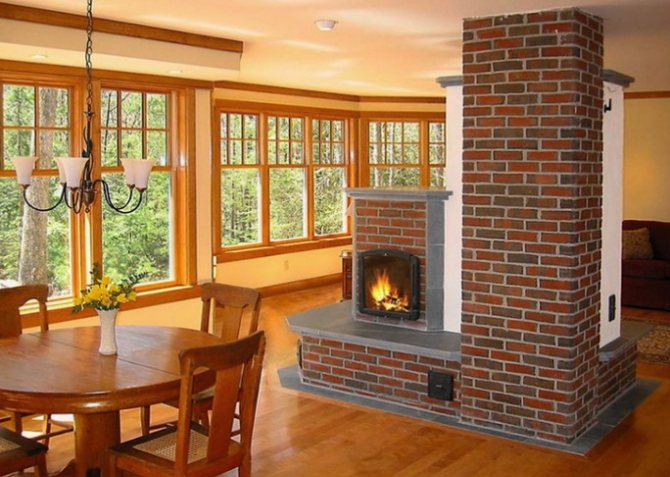

Furnace advantages
The Russian stove is a very heat-intensive object, it provides rare fireboxes for large bookmarks of firewood, accumulates heat and is able to maintain a stable temperature in an insulated house for up to 24 hours. Provides the opportunity to admire an open flame. With her, excellent cooking on an open fire. High efficiency (up to 87%) and saving firewood.
But the oven cannot:
- to quickly warm up the house for the out of breath owners who have arrived for the weekend, it is warmed up according to the rules - gradual fireboxes ...
Advantages of the fireplace
- No foundation required - only a solid floor.
- An open flame is the best sight for a summer cottage evening.
- The option with glass is better able to save heat and warm up the room, with better efficiency. It has an order of magnitude better fire safety, escaping coals are not dangerous, like an open fireplace, from which you cannot leave.
But the fireplace cannot:
- heat efficiently, economically, with high energy efficiency. He has a low efficiency - everything flies into a straight pipe, uncontrolled combustion, the difficulty of cooking something.
The classic fireplace was created in Europe to warm up residents in rare times of mild cold snaps. Our classic fireplace has mainly a decorative role - to admire an open flame, to create a special comfort, but our heat loss is too tough for it.
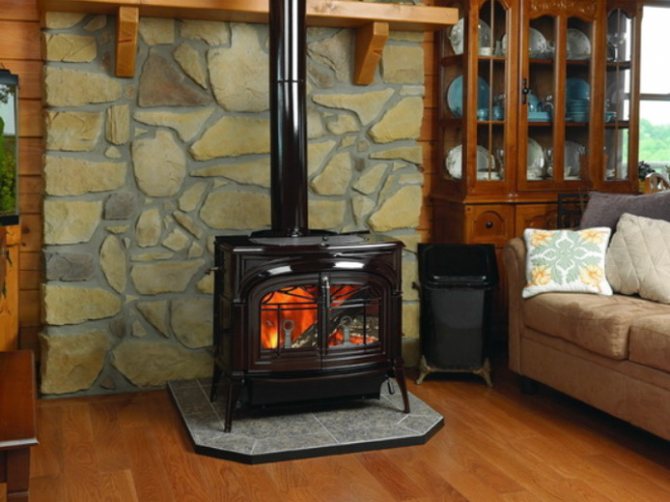

Metal fireplaces, due to the ease of acquisition and installation, are becoming more and more popular ...
Neither this nor that for giving
It turns out that the most significant shortcomings of the stove (long warm-up, expensive and difficult to create) and the fireplace (weak power, cold, no heat accumulation, firewood to the wind) tell us that nothing is suitable for our summer cottage. What to do?
It turns out everyone has already decided to help us empty the wallet. A fireplace stove or fireplace stove with a hob at the top combines the advantages and tries to neutralize the disadvantages given above. There is efficiency, there is some heat capacity, an open flame behind the glass - please, you can cook both on a flame and on a hob, it will warm up the house quickly, since it is more powerful than a fireplace, and perhaps a built-in small water circuit will also allow you to connect several radiators, put it is possible on a solid floor (200 - 400 kg) There are many options for such a wonderful device for giving - choose! ..
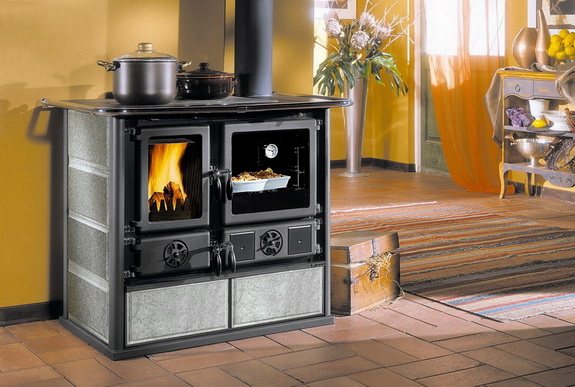

Fireplace stoves
The fireplace looks great in the interior, but it has a lot of heat loss, in order to avoid this, you can combine two designs - a stove and a fireplace.
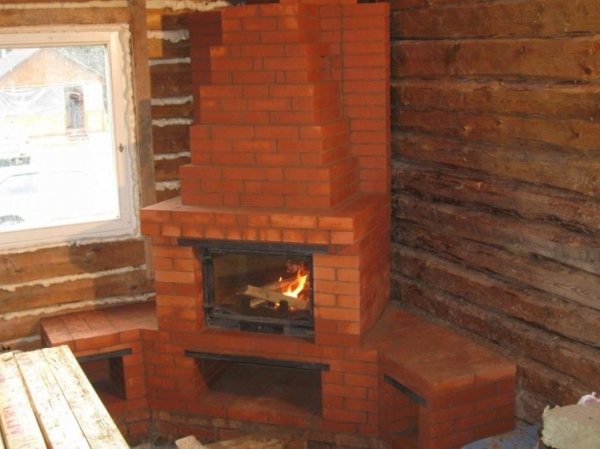

The stove will allow the heat to stay in the room longer, and if you equip a special plane with a hob, you can cook without using a gas stove. A fire in the oven can provide sufficient temperature for heating and cooking food. This model is called "Swede" and is suitable for cooking, heating, storage of clothes. The hob is made of cast iron and can have several burners.
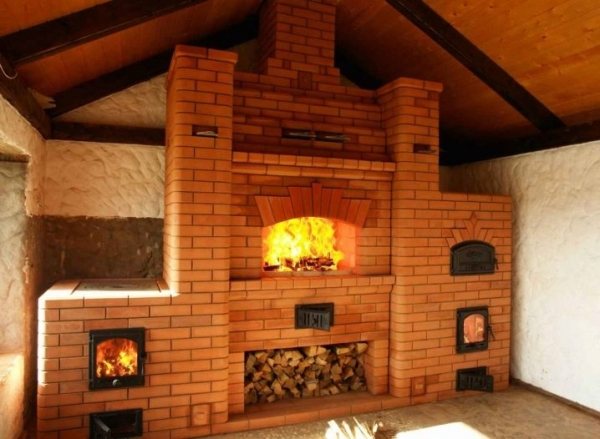

The fire in the fireplace stove can be open or closed. The closed design is more functional and takes up less space. The glazed firebox can be used as a stove and a fireplace at the same time. Such designs are more suitable for home interiors than outdoor interiors.
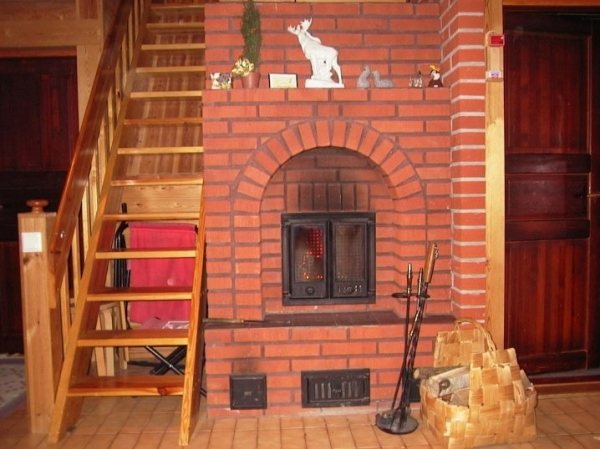

General comparative characteristics and concepts
A fireplace is a hearth that is large or medium in size; such a heating device is also characterized by the presence of an open hearth. Due to its design features, such a hearth plays a predominantly decorative component and is not used to heat rooms, playing the role of decor in it.
Stoves, in turn, differ from fireplaces in their small dimensions and in that, unlike the first ones, they have a completely closed and sealed hearth. Because of this, they are often used both as a primary and secondary heating source. However, their significant disadvantages include not such a well-developed and unique design as that of ovens.
fireplaces and stoves have the following differences and characteristics:
1. Due to the open firebox near the fireplace, most of the generated heat energy is released into the chimney and thus the temperature in the room practically does not change.
2. The fireplace can be used to create a comfortable environment and atmosphere in one room. However, such heat will quickly evaporate and it will be very difficult and costly to maintain it constantly in terms of fuel consumption.
3. Near the fireplace, the space that is located near the burning fire is heated, the stove, in turn, heats the space not only near the firebox. The stove is heated more evenly.
4. The fireplace heats up very quickly, while it will take from 30 minutes to 1.5 hours to fully heat up the furnace structure and for it to start generating thermal energy, which will spread throughout the premises of the house.
5. It is almost impossible to regulate the intensity of combustion and fire in the fireplace, since the fire and the firebox itself are completely open here and oxygen enters it endlessly.
6. It is very easy to regulate the intensity and level of fire burning in the furnace firebox. For this, many stove-makers and manufacturers have created such a constructive element as a blower. Thanks to him, you will be able to regulate the intensity of combustion and the amount of oxygen entering the furnace yourself.
7. If we talk about the appearance of both heating units, then they certainly differ from each other. For example, stoves look more simple and concise. They often require additional decoration and cladding.
8. Fireplaces, in turn, due to their unique design features, bring the necessary romance into the interior, and an open hearth and a flame burning in it make the atmosphere more comfortable and peaceful.
In short, stoves and fireplaces differ in the following features and characteristics:
| Fireplace | Bake |
| The hearth is completely open and the fire is naked. As for the chimney, it usually has a straight and simple design without bends. | The furnace of the stoves is completely and hermetically closed, and the chimney hood has a more complex structure, with different bends and transitions. |
| In the case of a fireplace, the room is heated using an open flame, which emits thermal energy. | In the case of installing a furnace, heating will be carried out due to the heated walls of the heating unit. |
| Heating the room and the area around the hearth is carried out in a matter of minutes, while this heat quickly goes out through the chimney and re-kindling is required. | The stoves heat up for about several hours, but the heat is given off for a long time and is evenly distributed throughout all the nooks and rooms in the house. |
| As mentioned earlier, with the help of a fireplace, the space is heated directly in front of the hearth itself. | Furnaces heat the entire room, and hearths with high power and a system of air ducts or with a water circuit are suitable for heating large, including two-story houses. |
| Due to the fact that oxygen enters the fireplace insert in large portions, always and irregularly, the consumption of firewood is very large and expensive. | The consumption of wood or coal in the stove is more economical and profitable. This is achieved due to the fact that the firebox in this case is completely and hermetically closed, and oxygen is supplied in normalized and small portions, with the possibility of complete and individual control. |
| The fireplace is used as a decorative decoration that creates a certain color in the room and brings comfort. | Stoves do not have such a stylish design as fireplaces, but their power and functionality are at the highest level. Thanks to this, the stoves are used as a heating device. |
Device and design
The chimney is an important part of the fireplace design and has two options:
Straight design. The version with a direct chimney is installed directly at the time of construction of the building. Simplicity and versatility make the design convenient and widely used.
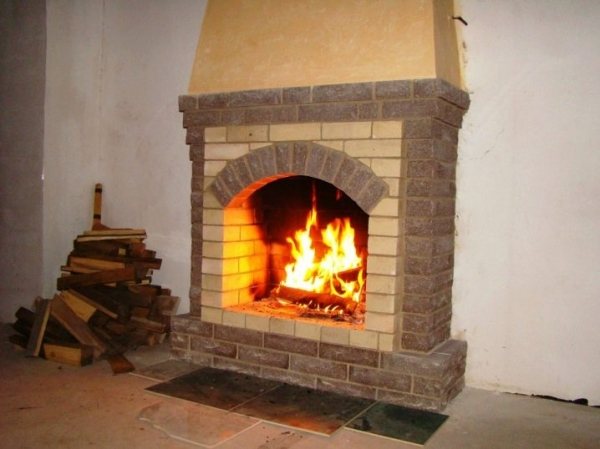

Inclined design. Convenient for reconstruction or renovation, it allows you to connect the chimney to ready-made channels.
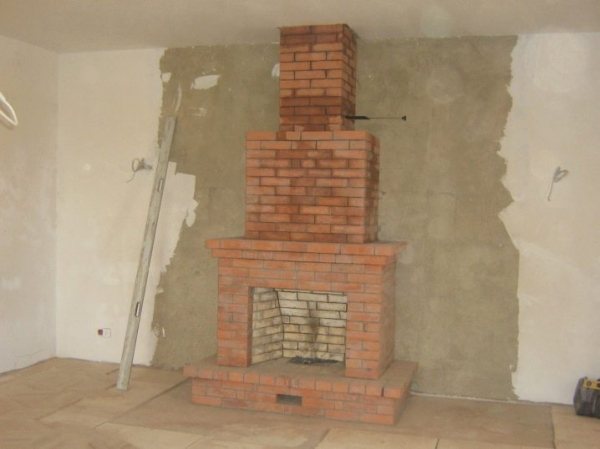

The chimney can be with corners (rectangular, triangular) and made of brick, but experts recommend building a metal chimney with a smooth surface into it, this will help to avoid the formation of soot.
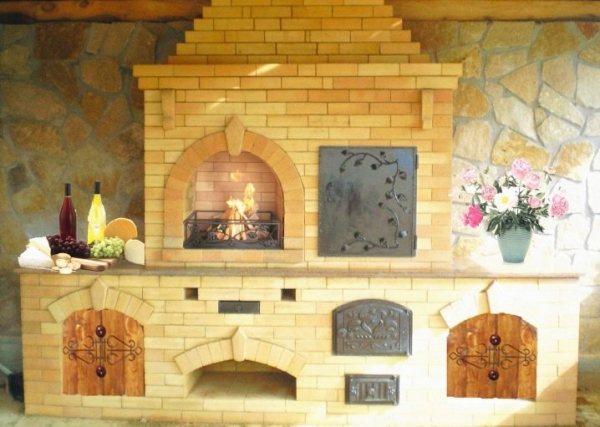

To improve heat transfer in the construction of the firebox, you can position its walls at a slight slope, and the installation of a special smoke chamber will protect the room from sparks and soot.
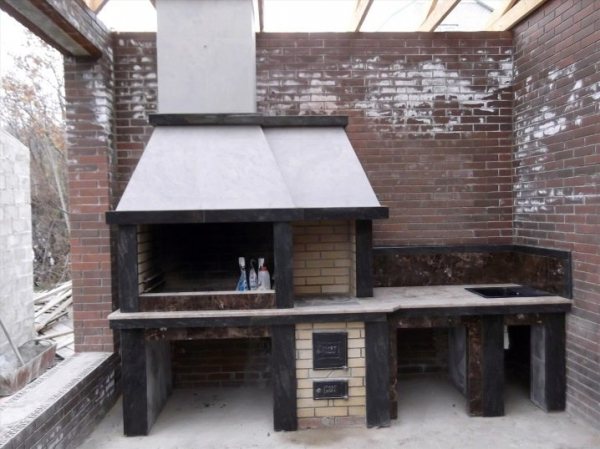

Also, to improve heating, you can additionally lay out a heating panel made of bricks, it will allow the heat to stay longer, which is very important in large rooms with fireplace heating.
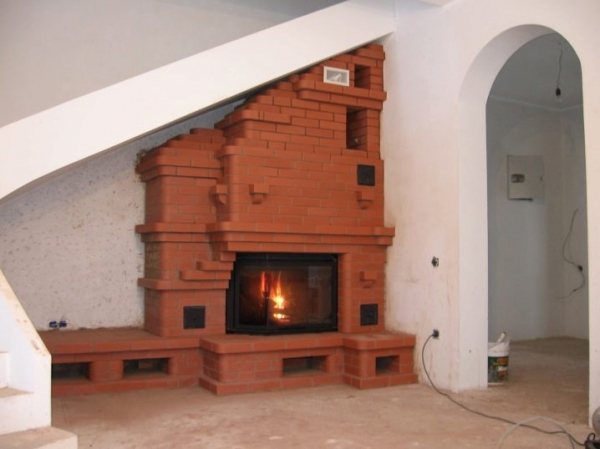

The exterior design consists of a portal and cladding. The portal is the part that frames the firebox from the outside. Doors can be attached to the portal, if the brick fireplace is of a closed type. A fireplace with a glass door gives a full view of the fire and is not much inferior to an open device.
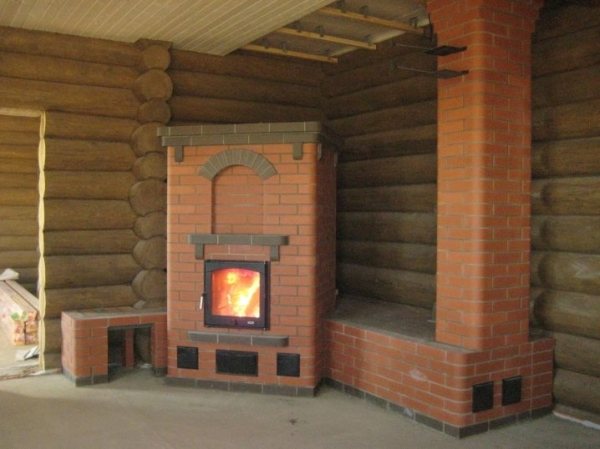

You can also insert a door made of high-strength tempered glass with tinted glass, the fire behind it looks very nice and soft. Warm bronze tones will do, but cool graphite tones will look good in a modern interior.
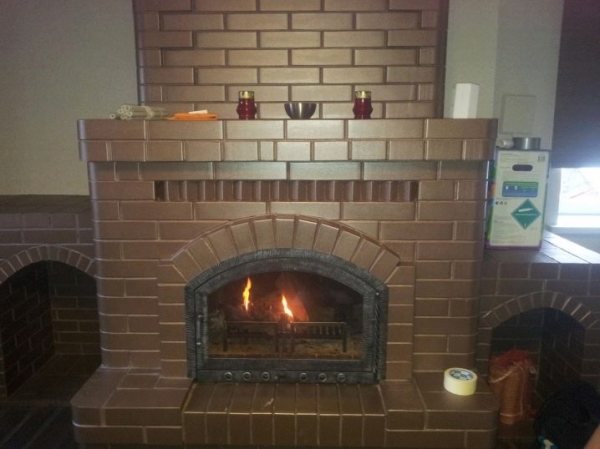

In old houses, a coarse stove is often found. Such a stove can be converted into a fireplace, but it is worth contacting a specialist. Overlapping rough under the fireplace is not an easy task, you need to assess the condition of the stove, carefully inspect the chimney and all other structures, check the masonry for cracks. A small stove door is not suitable for installing a fireplace, you can expand it or close the door and make it larger in another place.
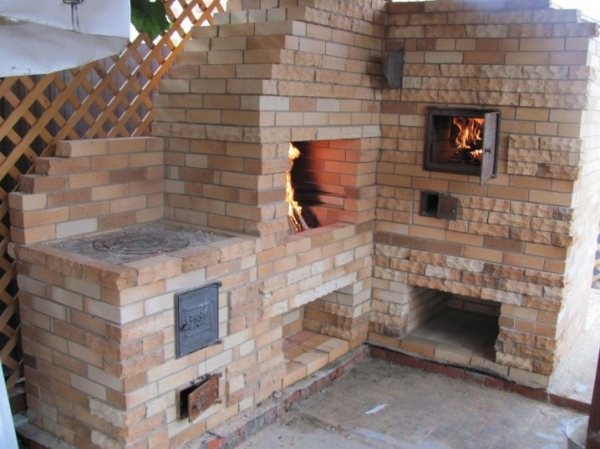

If you plan to install a fireplace stove, you need two fireboxes and two chimneys, but such complications can be avoided if you install a fireplace with a heat-resistant glass door. This is a trick to keep it warm longer and you won't need an additional oven.
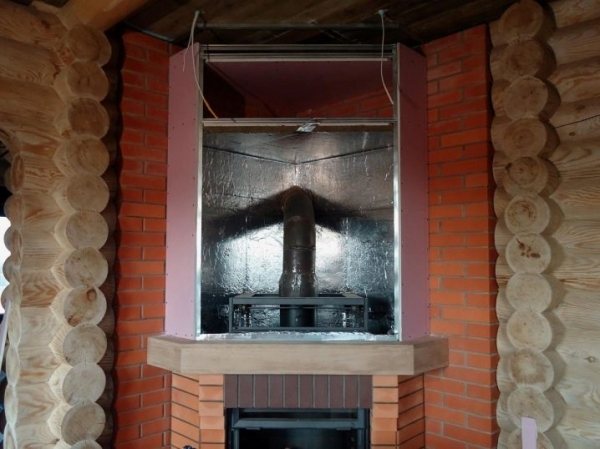

Styling
If all the preparatory work to strengthen the floor is completed (the floor must support the weight of the fireplace structure), schemes, plans and calculations have been drawn up, you can start laying a homemade fireplace.
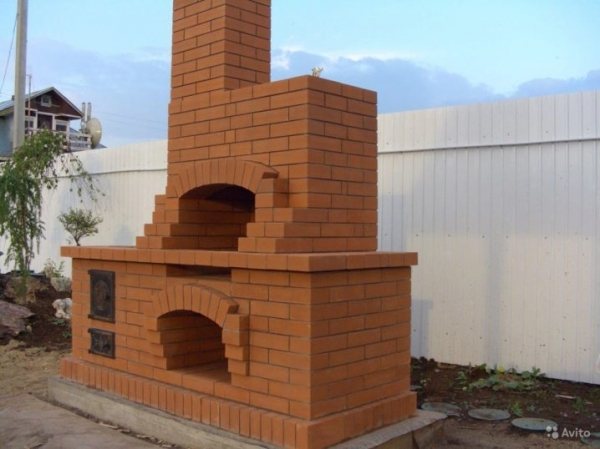

For laying any fireplace, you need bricks of different sizes: whole, half and quarter, this will help to avoid misalignment with the plan.The number of bricks, binder mass and other materials is strictly calculated before starting work.
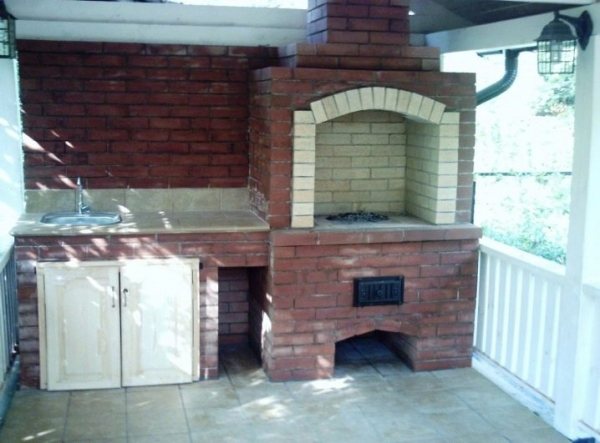

It is worth laying home-made rows in strict accordance with the plan, there should be no differences and errors, you can use a level to check. The height of the joints for a red brick fireplace of standard sizes should not be more than 0.5 cm, the mortar must be laid out in the middle of the brick plane.
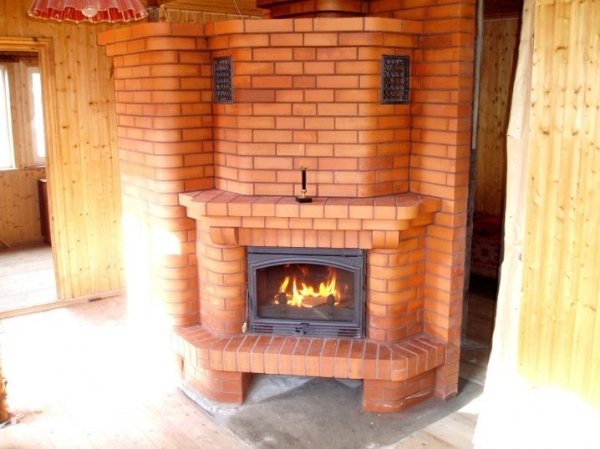

But, it is worth remembering that only a specialist stove-maker can perfectly lay out a fireplace or stove. You should not entrust the work to non-professionals or do the calculation yourself, especially if you have no experience. Such a design is not assembled quickly and requires a careful approach.
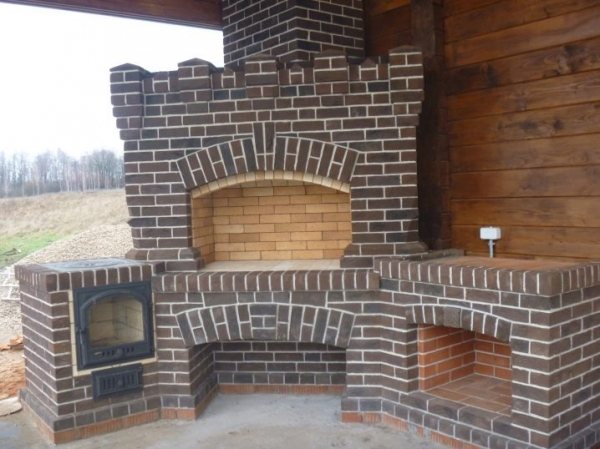

How to finish
There are several ways to frame brick facades with a built-in firebox:
Plaster is one of the simplest and most practical options. The modern composition allows you to plaster relief patterns or a simple smooth surface. Paint or decorative plaster can be applied on top.
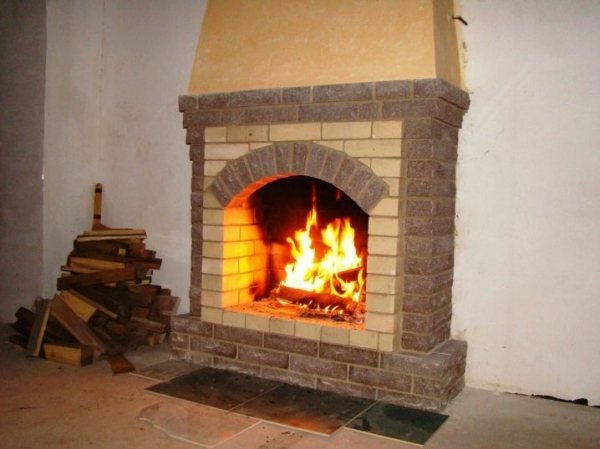

Painting is the easiest option. If you do not want to hide the relief of the bricks, it is enough to walk through 1-2 layers of paint, but it is worth choosing the least toxic and durable samples. To make the paint lay flat, you can plaster the brick with a thin layer of finishing putty and only then paint it.
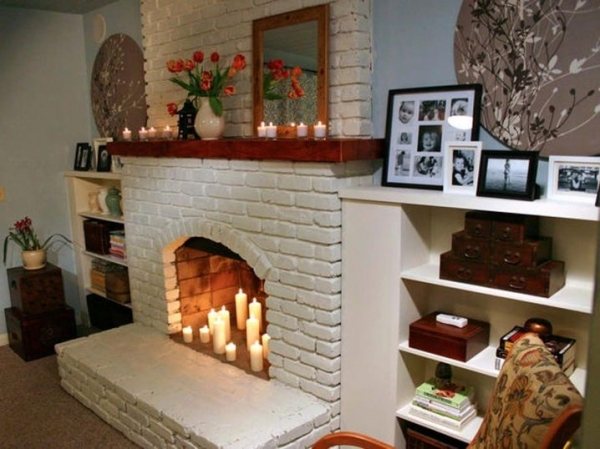

Facing with tiles or stone. The option is quite expensive and effective. In the modern market, there are more images, different in color, texture, size and pattern. The facing stone can be laid out in order, or in any other chaotic order. Tiling the facade of a fireplace is not so easy, it is tedious to find a good adhesive. The option with chipped tiles looks quite interesting, such a design is much easier to do, you just need to pick up pieces of suitable size and dock.
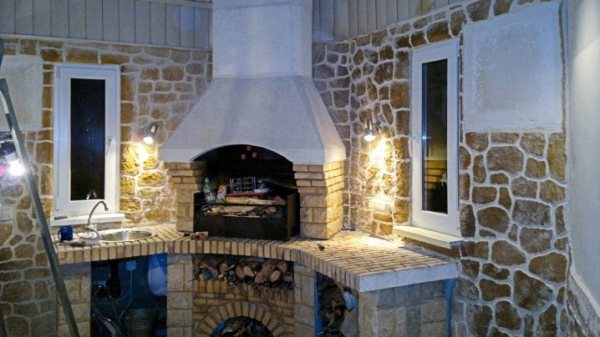

If we are building a closed fireplace, we make the cladding corresponding to the glass and partitions. Here the decoration will be the brick itself or ceramic tiles.
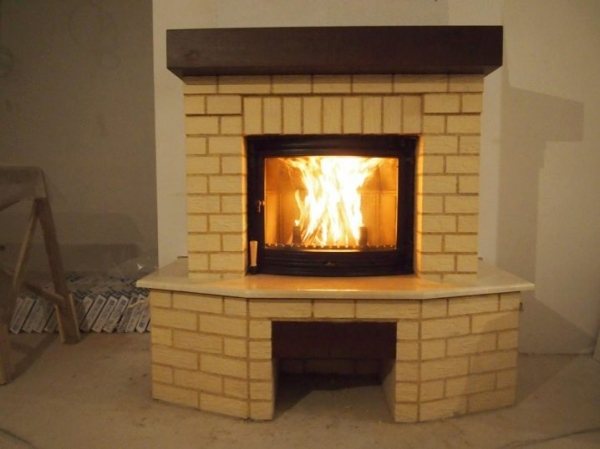

Color solutions
The color scheme of the fireplace should match the main interior. For the "loft" style, hand-molded bricks with an aging effect are suitable. For a classic interior in beige tones - light yellow brick.
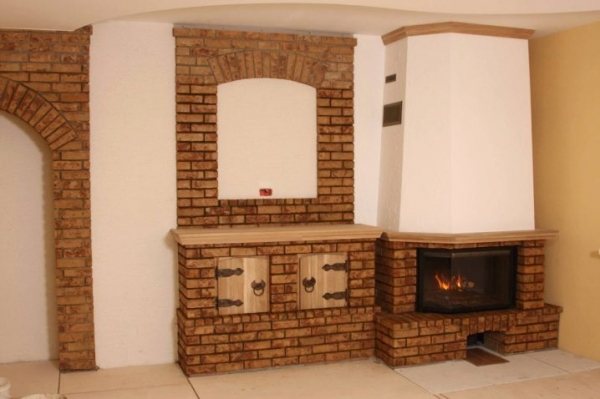

Modern colorful coatings and putties can withstand high temperatures and are easy to clean, this makes it possible to paint the fireplace in any color.
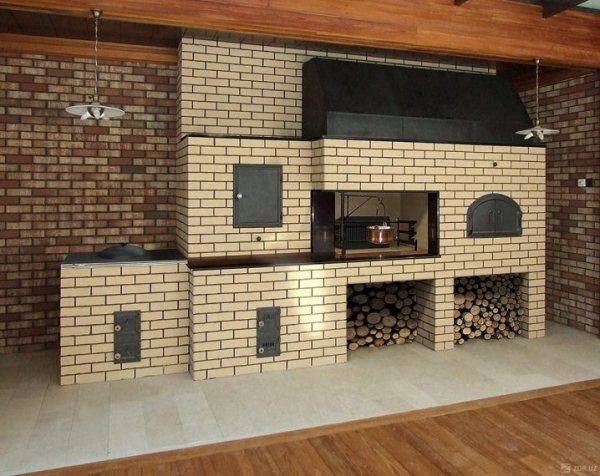

The cost
It is an expensive pleasure to lay out a fireplace made of high-quality material: prices vary, but generally the cost is 2-3 times more expensive than a cast-iron stove.
The manufacture of heat-resistant bricks is a costly and time-consuming process: it is necessary to harden the brick at the highest temperature, select high-quality clay, and get rid of harmful additives. How much the masonry will cost depends on the work of the stove-maker, strengthening the floor, the cost of bricks and bonding materials, on average - 50 tons.
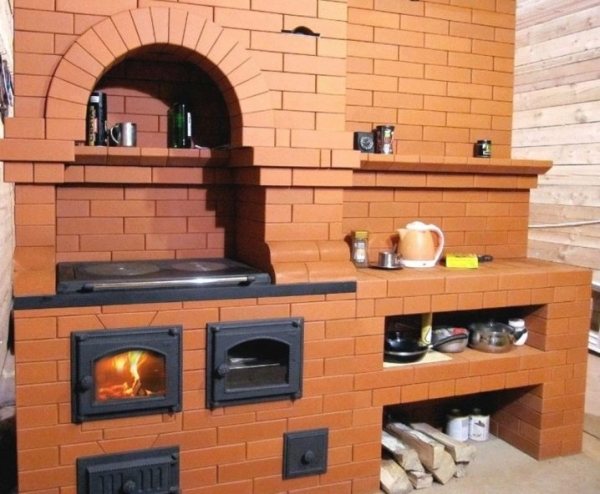

Comparison
You can determine for yourself which of the two fireplaces presented is better after comparing the main characteristics.
- Operational period. Branded, expensive models of cast-iron options can boast of a long operational life. With regular use, a brick hearth begins to deteriorate 5-7 years after laying. Cast iron models are capable of providing heat for more than 15 years. But a lot depends on the manufacturer and the chosen model. If the doors were originally installed

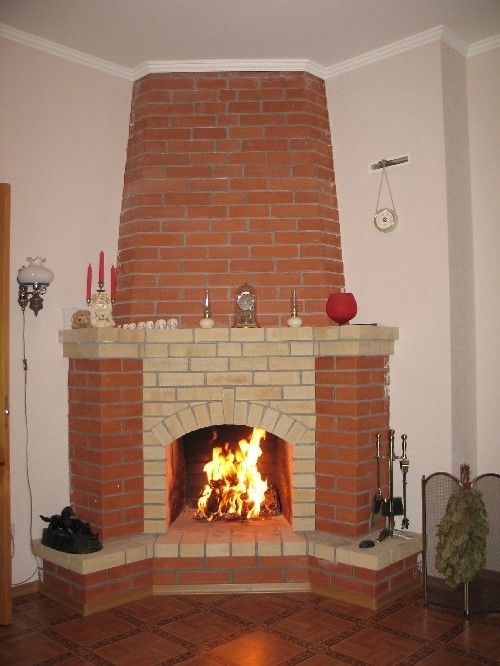
Brick fireplacecrooked, for bad details, then you should not expect a long service from such a fireplace. Therefore, when buying, carefully inspect the condition of the unit, the strength of the fastening of the parts, make sure there are no chips and cracks.
- Appearance. In terms of aesthetics, a brick oven is definitely better. It can be built taking into account personal preferences, relying on the style of the interior. But the appearance of his cast-iron brother frightens off many. But it's up to you to decide which fireplace is more beautiful.
- Installation. It is much easier to install a cast iron hearth.This is explained by a ready-made design that can be bought in a store. A qualified team will carry out all the work in 3-5 days. To obtain a brick fireplace, you will need to find a competent stove-maker (which is now very rare), draw up a diagram of the future hearth, open the floors, pour the foundation, lay out bricks. The material should be laid evenly, each layer is checked by the building level. One mistake made during the masonry process will affect the operation of the fireplace.
- Cost. At this point, the cast iron fireplace wins again. The cost of construction and installation is significantly lower than the price of bricks and the work of stackers. If a metal stove will cost you, on average, 20 thousand rubles, then its competitor will require 2-3 times more investments.

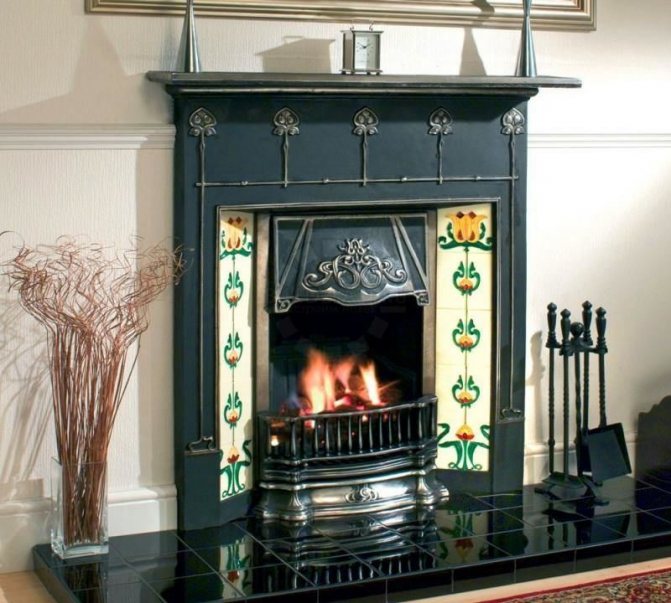
Cast iron fireplace - Environmental friendliness. When heated, bricks do not emit unpleasant odors and hazardous vapors. But when burned out, metal particles are sprayed into the air, negatively affecting the atmosphere in the house.
- Mobility. The cast iron fireplace is heavy but mobile. If desired, it can be moved to another room. To do this, you will have to change the location of the chimney. The brick hearth cannot be moved. There is only one procedure for it - dismantling, that is, demolition.
- Purchase. Cast iron samples are presented in specialized stores. This allows you to buy a fireplace right away. It takes time to create a brick hearth.
- Heating possibilities. Both fireplaces perfectly fulfill their main function - they heat the premises. But there is one important difference: cast iron heats up slowly, but retains heat for a long time. Brick, on the other hand, heats up quickly, but cools down just as quickly. You need to choose according to this criterion taking into account where the fireplace will be installed. For summer cottages and suburban real estate, a brick model is suitable, which allows you to quickly get heat when you enter the house. And in order to obtain constant heating from the hearth, it is better to purchase a cast-iron version.
Repair and maintenance
The fireplace needs regular maintenance: it is necessary to periodically clean up the ash pan and clean it. The chimney should be cleaned three times a year, as recommended by experts. You can invite a chimney sweep or do it yourself.
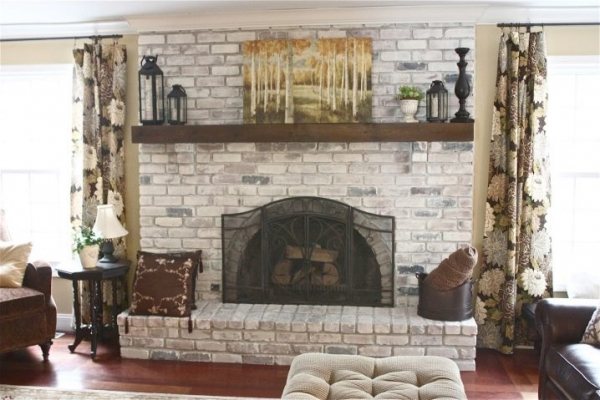

Restoration of brick fireplaces is a complex and costly process, it is easier to clean the structure once a season than to contact a master and waste precious time and money.
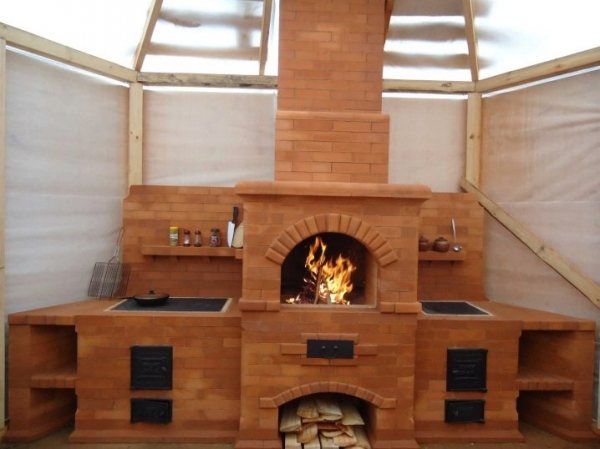

Brick stove: design and operation features
The brick fireplace is suitable for suburban real estate and can be used at any time of the year. His
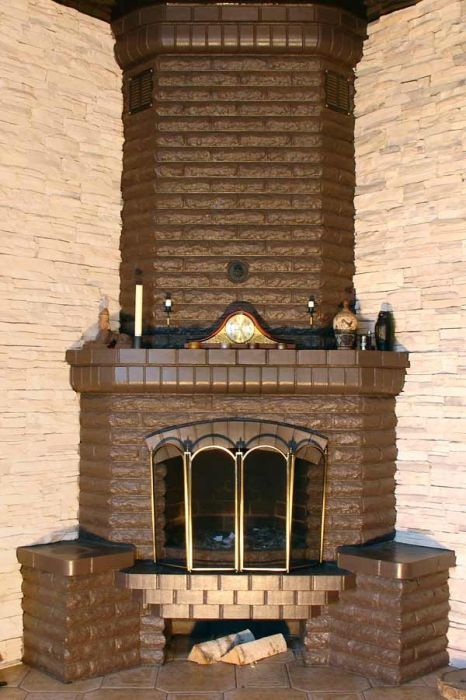

Brick fireplace
the design allows you to quickly warm up the room, especially with an open firebox. At the same time, the oven cools down quickly, almost immediately after the fire is extinguished.
Brick fireplaces open up many possibilities for the owner. Skillful hands will be able to make a compartment for cooking or barbecuing. It is not difficult to build a stove with your own hands and not necessarily within the confines of living quarters. Often brick fireplaces decorate a plot of a summer cottage or suburban real estate.
You can choose which is the best hearth for your home - made by yourself or by professionals. Both options open up room for imagination, allowing you to build the structure of your dreams. If you have any difficulties in this matter, contact the designer. He will help you choose an ordering scheme taking into account the general situation in the room.
Brick fireplace
Interesting solutions in interior design
An interesting solution would be to install an island fireplace directly in the wall. In the middle of the room, a not wide brick wall is installed, and a hole for a fireplace is made in the middle. The flame will be visible from all four sides, but you should take care of the strength of the structure: install metal pins in the corners of the wall and line them with square bricks. The upper part of the wall will serve as a place for the chimney. This solution will be interesting in both open and closed versions.
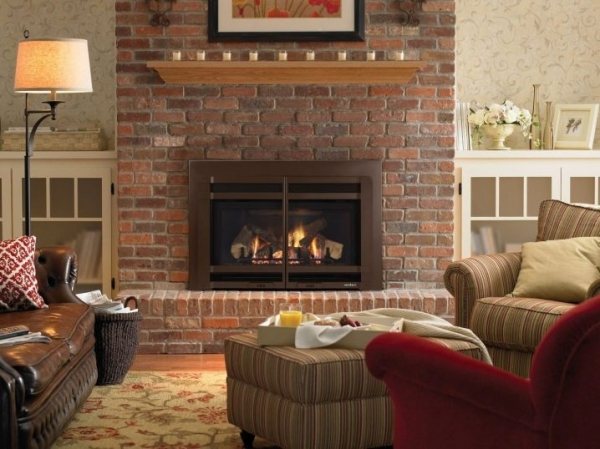

Another option is an interesting cladding.At the time of Peter I, it was fashionable to install stoves with Dutch tiles with pastoral drawings with cobalt paint in rooms. Such a stove will decorate the interior and make you spend hours looking at the drawings against the background of small tiles. In a spacious apartment, such a solution is quite appropriate.
